Comprehensive methods for drinking water analysis based on European Directive 2020/2184
Josep Lliberia Blasco1, Carlos Bueno1, Oscar Quintela1, Jack Steed2, Michael Scherer3 and Jianru Stahl-Zeng3
1SCIEX, Spain; 2SCIEX, UK; 3SCIEX, Germany
Introduction
This technical note highlights the key results from our compilation of drinking water methods based on European Union (EU) Directive 2020/21841 using the QTRAP 6500+ system and the SCIEX 7500 system. The operating procedure documents include full method details—such as chemicals and reagents, sample and standard preparation, instrument parameters, a results overview and example chromatograms—to ensure easy and repeatable replication of the methods on your instrumentation. Each method has been created with EU Directive 2020/2184 in mind, and in each case, the respective limits set by the directive were achieved.
Here, we share key points from four of six methods illustrated by example extracted ion chromatograms (XICs).
The compilation contains detailed information on how to analyze:
- Acrylamides using the QTRAP 6500+ system or the SCIEX 7500 system
- Haloacetic acids using the QTRAP 6500+ system or the SCIEX 7500 system
- Hormones and endocrine disruptors using the QTRAP 6500+ system or the SCIEX 7500 system
- Per- and polyfluoroalkyl substances (PFAS) using the QTRAP 6500+ system or the SCIEX 7500 system
- Polar pesticides using the QTRAP 6500+ system or the SCIEX 7500 system
- Pharmaceuticals and personal care products (PPCPs) and microcystins using the QTRAP 6500+ system
Method highlights
Quantitation of acrylamide in drinking water by direct injection using the QTRAP 6500+ system and the SCIEX 7500 system
This example demonstrates the importance of column selection with the QTRAP 6500+ system and the sensitivity improvement provided by the SCIEX 7500 system. Two columns are evaluated for use with the QTRAP 6500+ system. Figure 1 shows the results for the alternative column. Figure 2 shows the results for the recommended column, demonstrating increased retention time, method performance and separation from the void volume. Figure 3 shows the sensitivity improvement achieved when using the SCIEX 7500 system compared to the QTRAP 6500+ system.
Figure 1. XICs of acrylamide at multiple concentrations for both the quantifier (m/z 72 > 55) and qualifier (m/z 72 > 27) transition when using the alternative column with the QTRAP 6500+ system. When using the alternative column, the retention time is only 1.5 min, meaning that with this setup, the peak is very close to the void volume. In addition, for the qualifier transition, the 30 ng/L peak is barely detectable.
Figure 2. XICs of acrylamide at multiple concentrations for both the quantifier (m/z 72 > 55) and qualifier (m/z 72 > 27) transition when using the recommended column and the QTRAP 6500+ system. Compared to the alternative column, the retention time here is much longer (~4 min instead of ~1.5 min), meaning that it is well-resolved from the void volume. The sensitivity is also improved with this column, demonstrated at 30 ng/L where both transitions provide a satisfactory peak.
Figure 3. XICs of acrylamide at multiple concentrations for both the quantifier (m/z 72 > 55) and qualifier (m/z 72 > 27) transition when using the recommended column and the SCIEX 7500 system. When using the SCIEX 7500 system, the sensitivity is improved compared to the QTRAP 6500+ system, demonstrated by the XICs showing acrylamide at 10 ng/L for both the quantifier and qualifier transition, which is not possible when using the same method on the QTRAP 6500+ system.
Quantitation of haloacetic acids in drinking water by direct injection using the QTRAP 6500+ system and the SCIEX 7500 system
The QTRAP 6500+ system can readily achieve the parameters established by the current EU regulation for haloacetic acids in water, as shown in Figure 4. The SCIEX 7500 system, however, provides additional sensitivity, future-proofing your lab for any additional regulations. In Figure 4, each analyte has been highlighted at 10 µg/L with overlays of both quantifier and qualifier shown on the QTRAP 6500+ system. These XICs also show the ion ratio lines that depict where the peak apex of the qualifier ion should be so that it is within the 70%–130% ion ratio tolerance.
Figure 4. XIC overlays of each haloacetic acid at 10 µg/L on the QTRAP 6500+ system. These images show overlays of both the quantifier and qualifier ion for each analyte. Ion ratio lines depict where the peak apex of the qualifier ion should sit to be within 70%–130% of the ion ratio tolerance. DBAA: quantifier ion – m/z 217 > 81, qualifier ion – m/z 215 > 79. DCAA: quantifier ion – m/z 83 > 35, qualifier ion – m/z 85 > 37. MBAA: quantifier ion – m/z 139 > 81, qualifier ion m/z 137 > 79. MCAA: quantifier ion – m/z 93 > 35, qualifier ion m/z 95 > 37. TCAA: quantifier ion – m/z 117 > 35, qualifier ion m/z 119 > 37.
Quantitation of hormones, bisphenol A and alkylphenols in drinking water by direct injection using the QTRAP 6500+ system and the SCIEX 7500 system
The sensitivity of the SCIEX 7500 system is demonstrated in Figure 1, with 1 ng/L XICs shown for 4 of the compounds analyzed, meeting the EU watch list recommendation when using a large-volume injection. This method also combines hormones, BPA and nonylphenol in a single analysis, without the need for SPE pre-concentration of samples.
Figure 5. XICs of the steroid hormones analyzed along with BPA at 1 ng/L. These images show the sensitivity achievable when using the SCIEX 7500 system. Quantifier transition – m/z 295 > 143, qualifier ion – m/z 295 > 269.
Quantitation of glyphosate in drinking water by direct injection using the QTRAP 6500+ system and the SCIEX 7500 system
This example shows the importance of being able to perform an MS3 scan with your instrument. For glyphosate, the typical second transition provides a high background and lacks sensitivity. An MS3 transition improves the sensitivity due to increased selectivity. Figure 7 compares the second MRM transition for glyphosate and the MS3 transition using either QTRAP 6500+ or the SCIEX 7500 system.
Figure 6. XIC comparisons for glyphosate showing the quantifier and qualifier transition alongside the MS3 transition, highlighting the increased selectivity when using MS3 compared to the qualifier transition, improving the sensitivity of the method. Glyphosate quantifier transition – m/z 168 > 63, qualifier transition – m/z 168 > 79, MS3 transition – m/z 168 > 150 > 63.
References
- European Parliament, Council of the European Union. (2020). Directive (EU) 2020/2184 of the European Parliament and of the Council of 16 December 2020 on the quality of water intended for human consumption. (2020/2184)
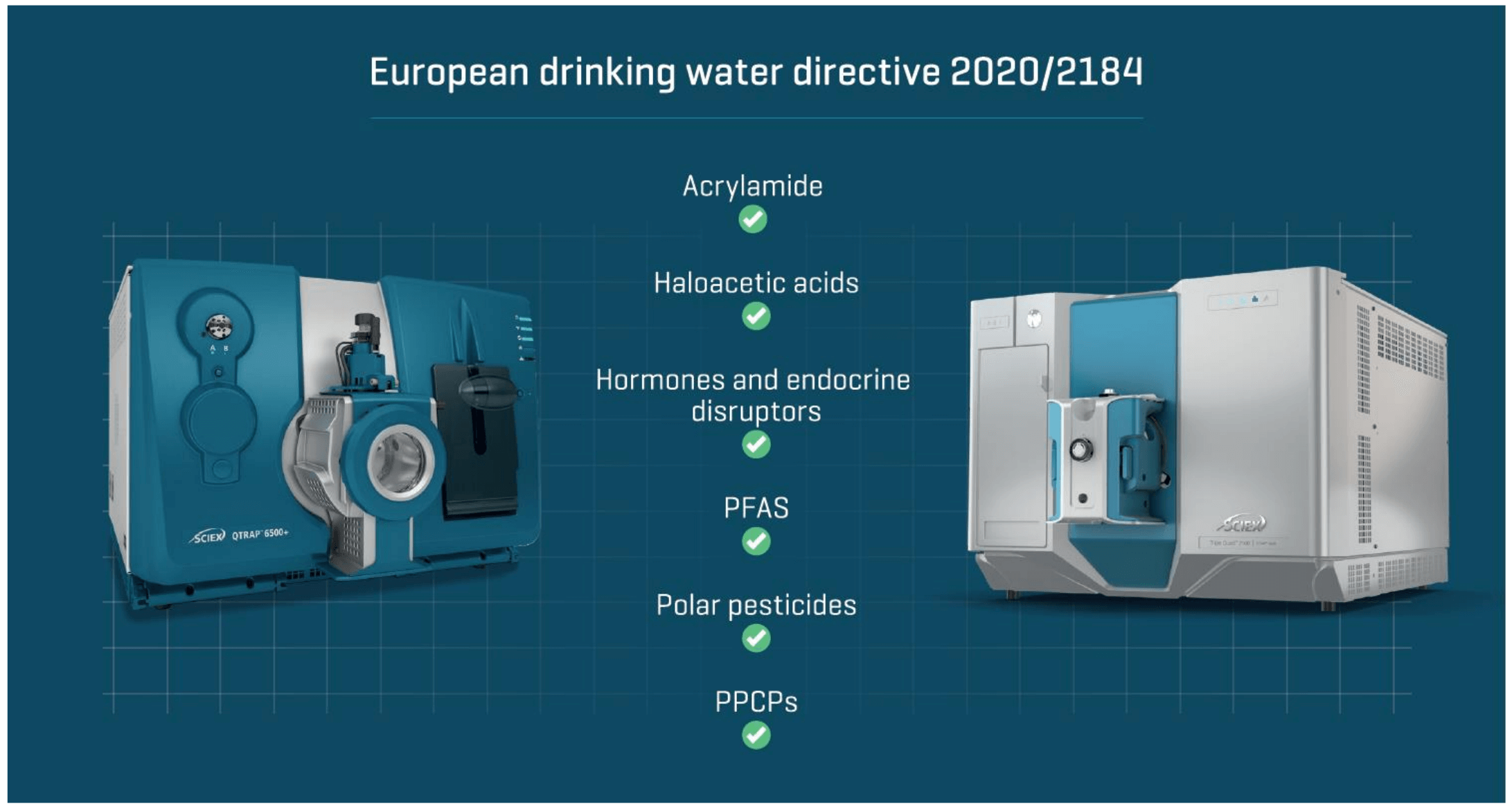 Click to enlarge
Click to enlarge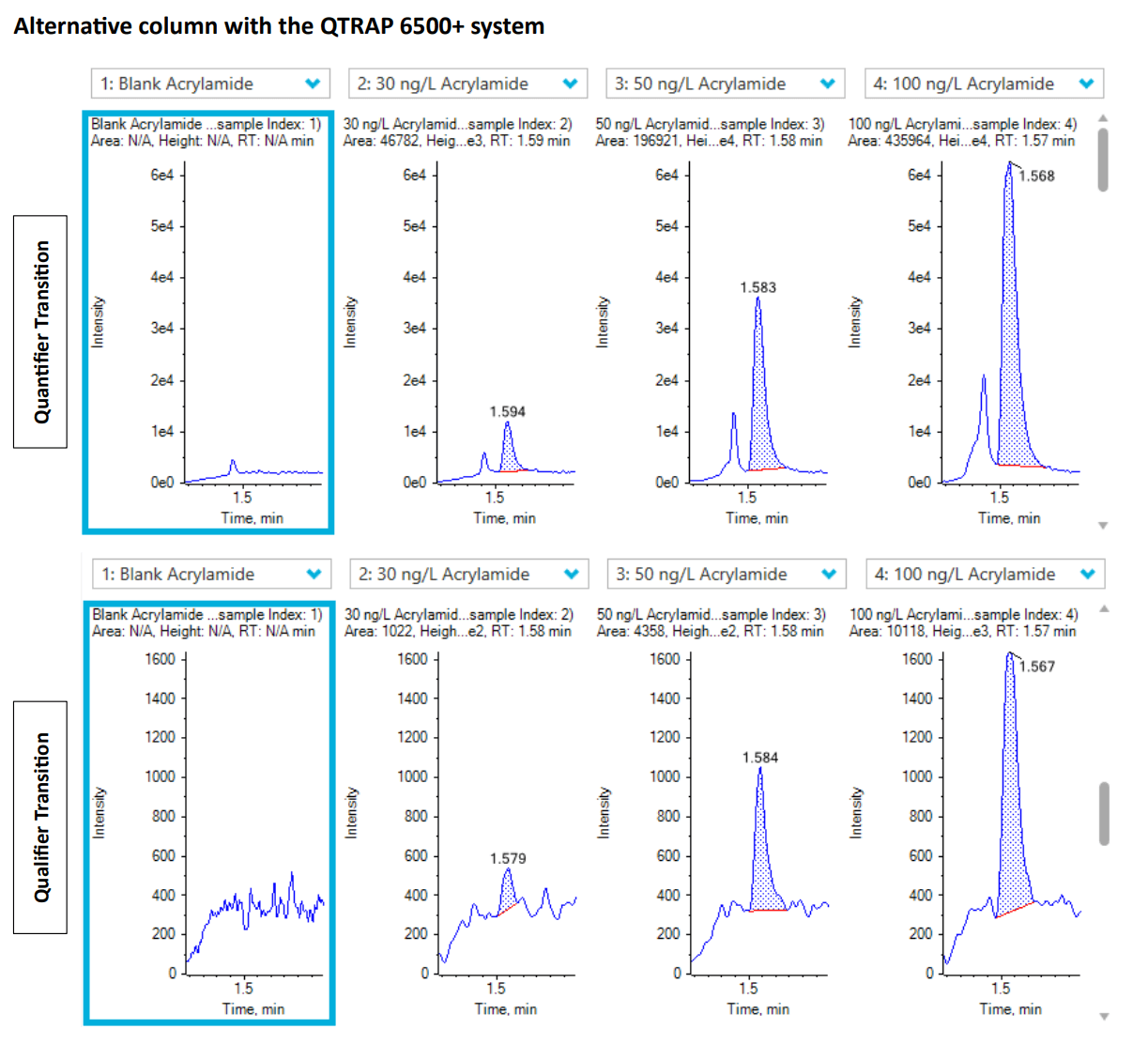 Click to enlarge
Click to enlarge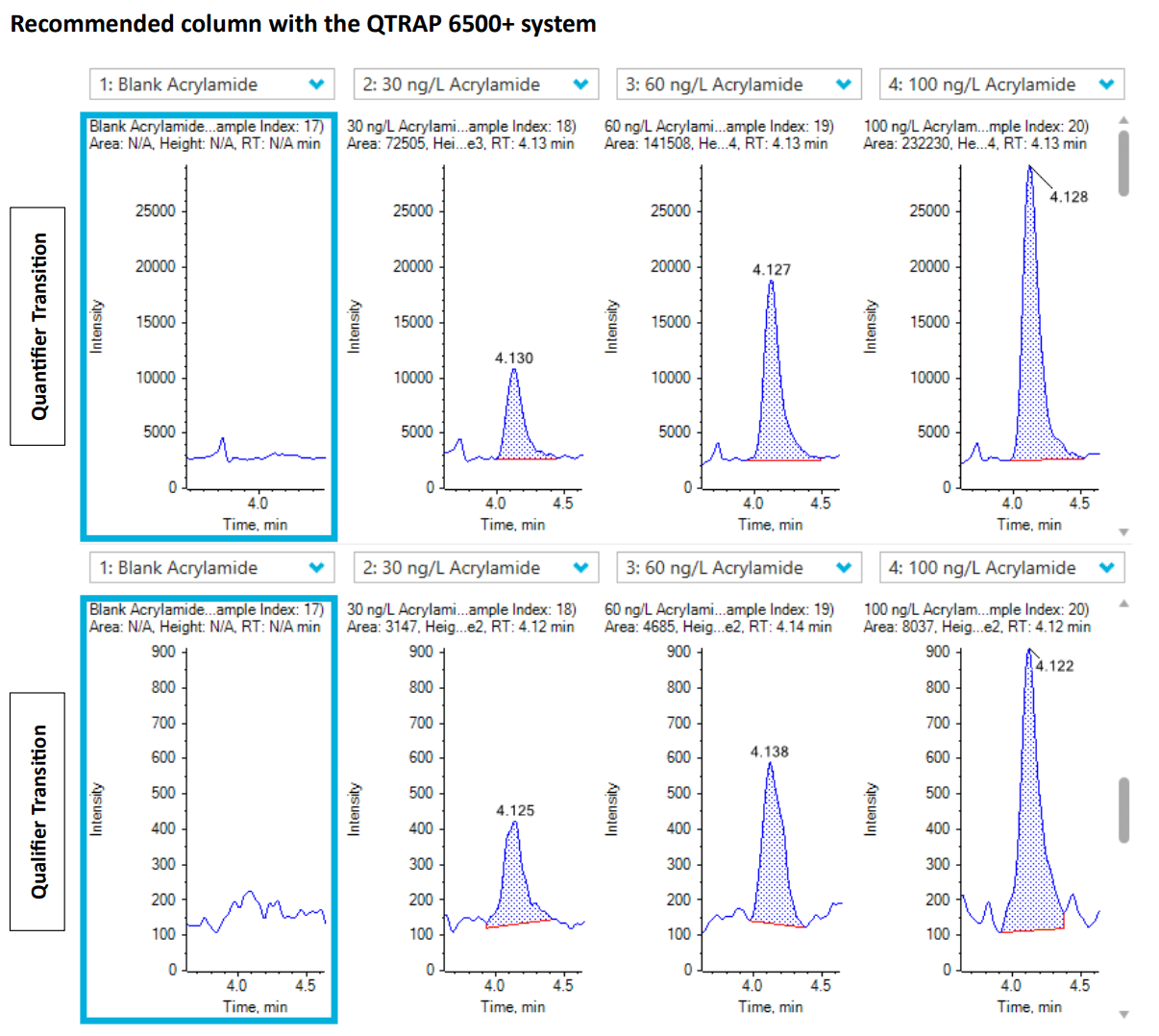 Click to enlarge
Click to enlarge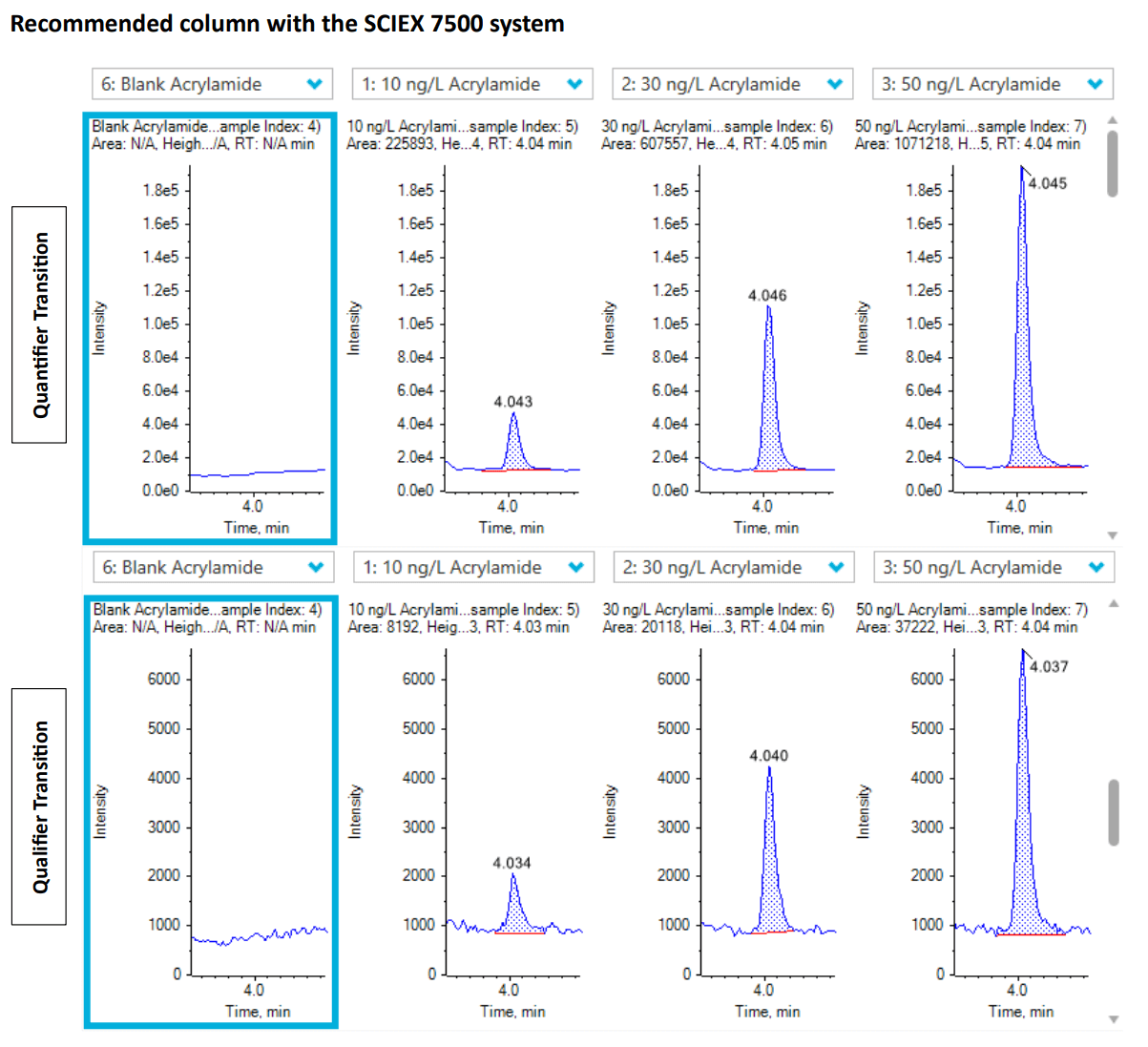 Click to enlarge
Click to enlarge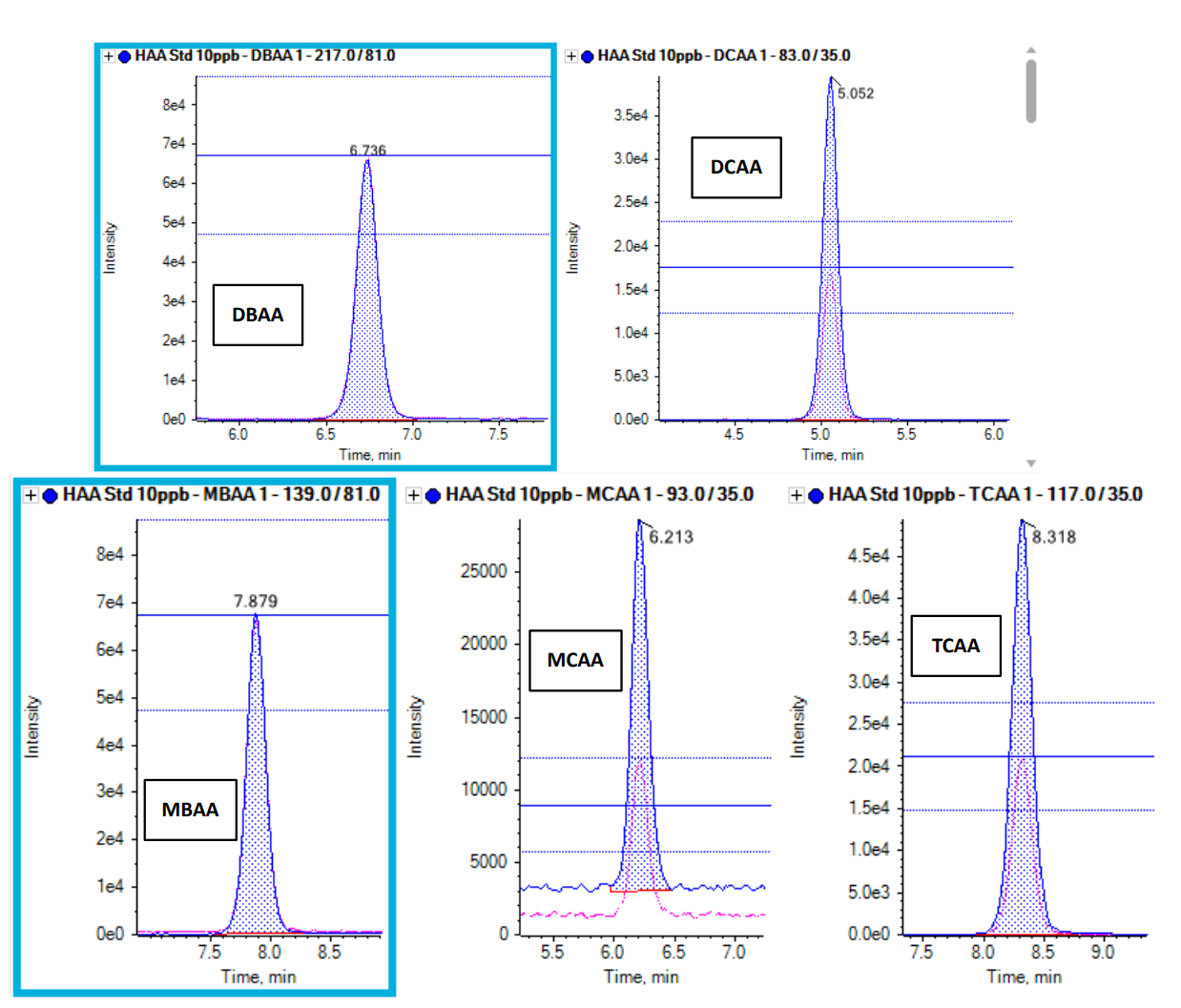 Click to enlarge
Click to enlarge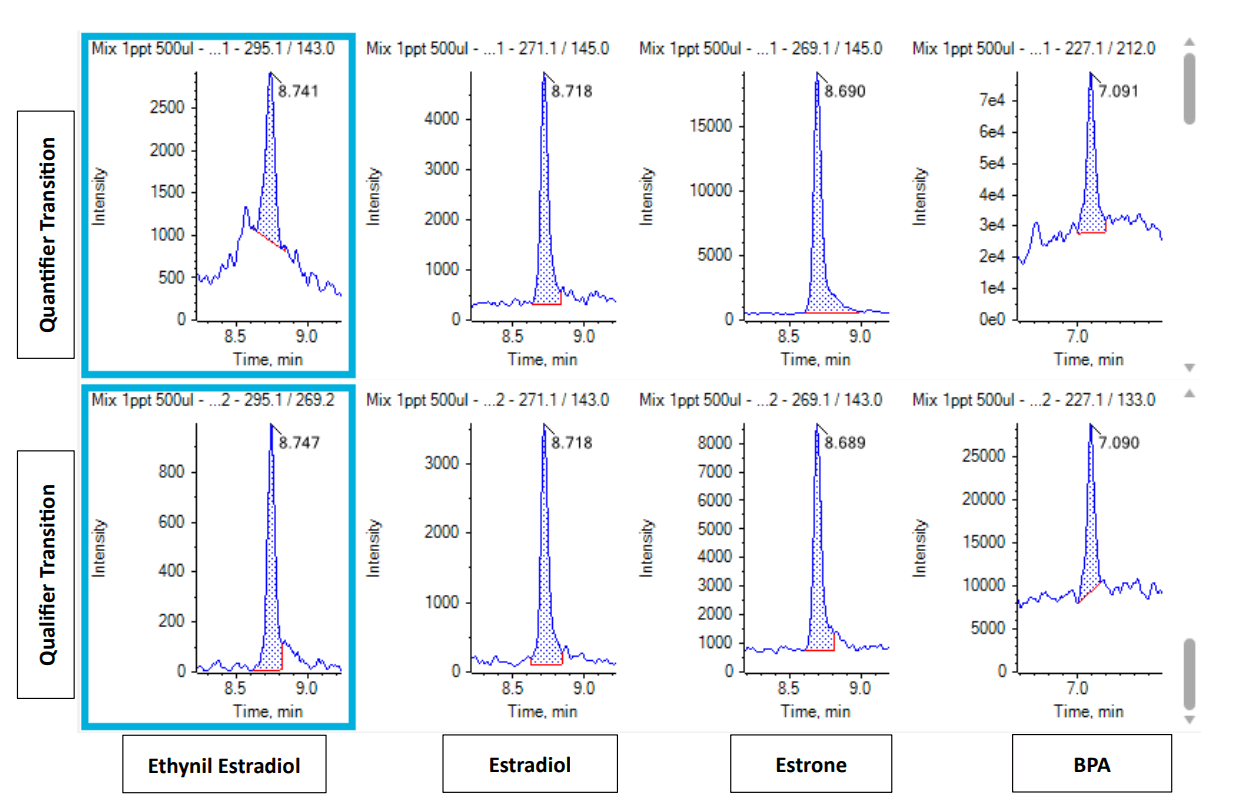 Click to enlarge
Click to enlarge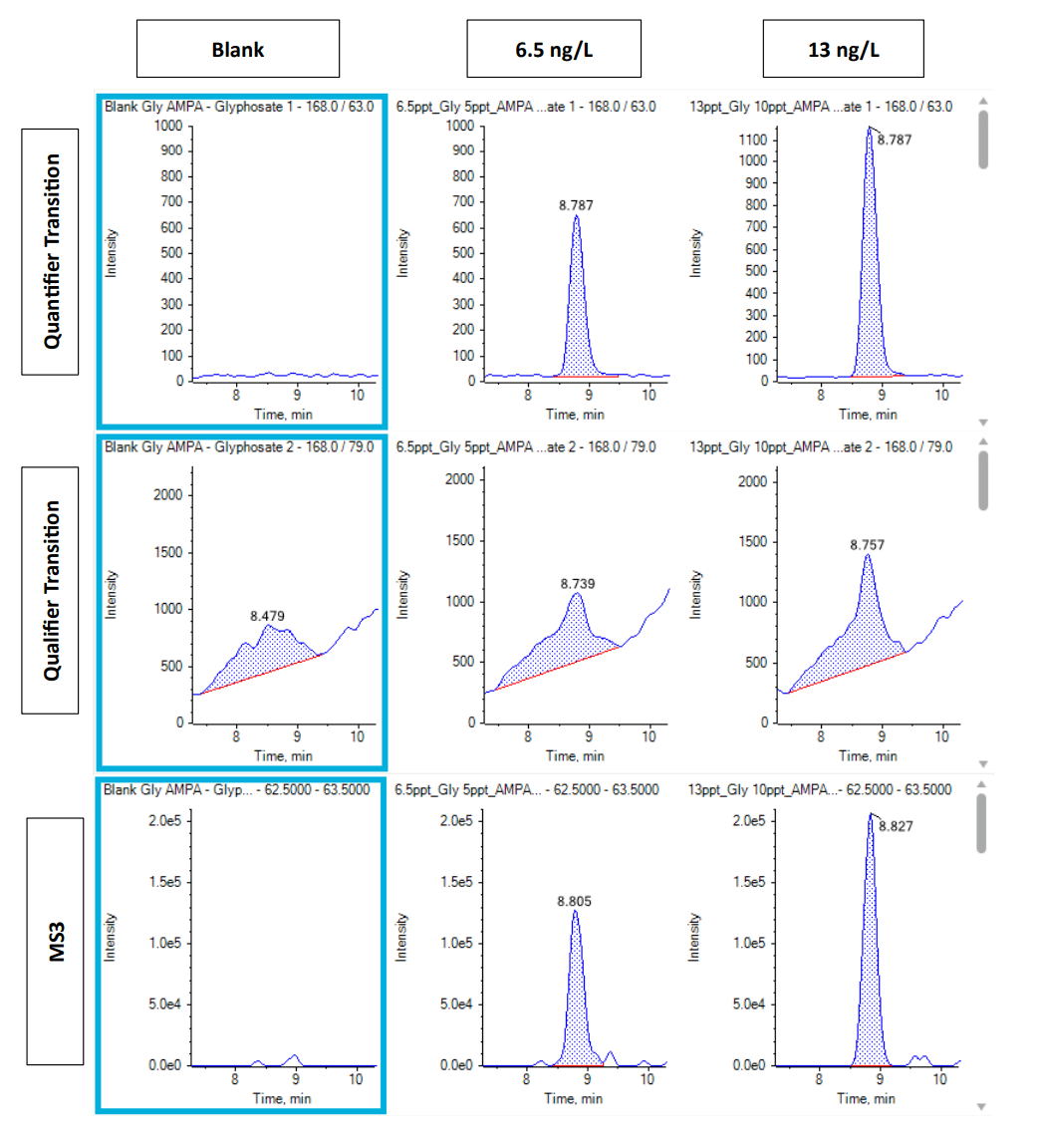 Click to enlarge
Click to enlarge